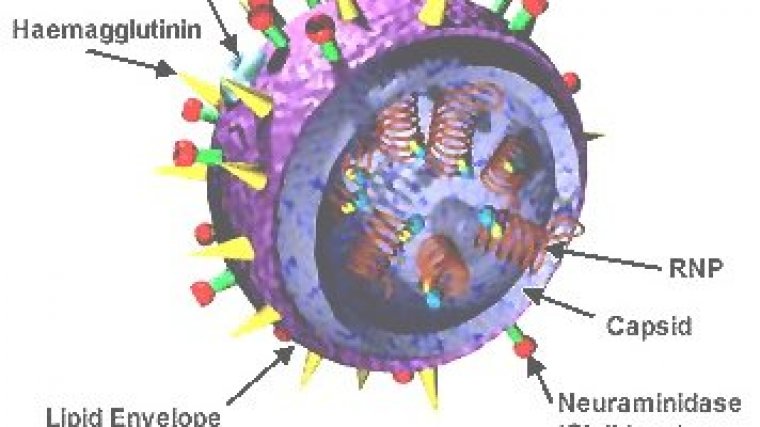| Health / Health News |
Study finds factors that may influence influenza vaccine effectiveness
NIH | APRIL 23, 2016
The long-held approach to predicting seasonal influenza vaccine effectiveness may need to be revisited, new research suggests.

Structure of the influenza virion. The hemagglutinin (HA) and neuraminidase(NA) proteins are shown on the surface of the particle. ![]()
Currently, seasonal flu vaccines are designed to induce high levels of protective antibodies against hemagglutinin (HA), a protein found on the surface of the influenza virus that enables the virus to enter a human cell and initiate infection.
New research conducted by scientists at the National Institute of Allergy and Infectious Diseases (NIAID), found that higher levels of antibody against a different flu surface protein — neuraminidase (NA) — were the better predictor of protection against flu infection and its unpleasant side effects.
Neuraminidase, which is not currently the main target antigen in traditional flu vaccines, enables newly formed flu viruses to exit the host cell and cause further viral replication in the body.
Higher levels of HA antibodies in a person’s body have long been associated with greater protection against influenza infection. As a result, HA antibody levels have traditionally been used to guide vaccine strain selection and to infer how effective that vaccine might be against circulating viruses until field studies are available.
However, variations in seasonal influenza vaccine effectiveness over the past decade have raised questions about their protective ability and whether other factors, such as antibodies to the NA protein on the flu virus, should be considered in designing the annual flu vaccine to improve its performance.
Surprisingly, the researchers found that participants with high levels of NA antibodies experienced a more robust protective effect from the vaccine than did those in the high HA group.
Specifically, the NIAID team found that the individuals with high NA antibody levels experienced less severe disease, a shorter duration of viral shedding and symptoms, and fewer and less severe symptoms compared with those with high HA levels when challenged with the 2009 H1N1 virus.
HA and NA antibody levels considered together may be a better predictor of whether someone develops mild-to-moderate influenza disease — and the severity of their symptoms — than either factor alone, but this study suggests that NA antibodies are the stronger factor for determining disease severity.
YOU MAY ALSO LIKE



